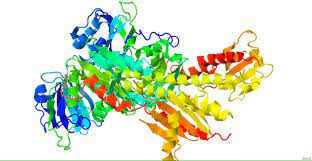Flowers are masterful of their potential to perceive and reply to modifications in their surroundings. One of the most terrific examples of this is the color avoidance reaction, a set of adaptive behaviors that flowers show off after they experience a reduction within the ratio of red to a long way-pink light. This response permits flowers to optimize their increase and improvement in crowded or shaded environments, where competition for light is severe.
On the coronary heart of this tricky regulatory mechanism lies phytochrome B PhyB, a pivotal photoreceptor that orchestrates a cascade of molecular and physiological changes in plants. In this article, we will delve into the role of phytochrome B PhyB as a key regulator of color avoidance responses in vegetation, exploring its molecular mechanisms, physiological effects, and implications for agricultural and ecological contexts.
Phytochromes: Light-Sensing Molecular Switches
Phytochromes are a category of photoreceptors that play a principal role in mediating plant responses to light alerts. These flexible proteins exist in two interconvertible forms: the biologically inactive Pr (red light-soaking up) shape and the energetic Pfr (some distance-pink light-absorbing) form. While flowers are exposed to crimson light, phytochromes undergo a conversion from Pr to Pfr, triggering a cascade of downstream signaling events that modulate numerous elements of plant boom and improvement. Significantly, phytochrome B (phyB) is a prominent member of the phytochrome family and has emerged as a key participant in regulating color avoidance responses.
Molecular Mechanisms of Phytochrome B-Mediated Signaling
The activation of phyB using crimson light and its next inactivation via far-crimson light serve as the molecular switch that governs its signaling features. Upon conversion to the lively Pfr shape, phyB translocates from the cytoplasm to the nucleus, in which it interacts with a myriad of signaling companions, along with transcription elements, protein kinases, and different regulatory proteins. This nuclear localization and interplay network allow phyB to modulate gene expression, chromatin remodeling, and protein phosphorylation, thereby exerting unique control over the color avoidance response.
Crucial to phyB-mediated signaling is its potential to alter the expression of a set of genes referred to as coloration avoidance reaction genes. Those genes encode a various array of proteins concerned with elongation growth, photomorphogenesis, and hormonal signaling pathways. By modulating the expression of those genes, phyB coordinates the plant’s reaction to shading and selling tendencies which include stem elongation, leaf hyponasty, and adjusted branching styles. This orchestrated response allows vegetation to outcompete neighboring flowers and optimize their access to light resources.
Physiological results of PhyB-Mediated color Avoidance Responses
The color avoidance response orchestrated by phyB has profound physiological consequences on plant boom and improvement. In shaded environments, in which the pink-to-ways-crimson light ratio is decreased, phyB-mediated signaling triggers a collection of adaptive modifications aimed at maximizing light seizure and photosynthetic performance. Stem elongation, a trademark of color avoidance, enables vegetation to elevate foliage above neighboring vegetation, minimizing shading and improving light interception.
In addition, phyB-induced leaf hyponasty, or the upward bending of leaves, further contributes to light capture utilizing optimizing the angle of incident light at the leaf floor. Those morphological modifications collectively beautify the plant’s competitive capacity in shaded habitats, permitting it to thrive underneath situations of light obstacles.
Implications for Agriculture and Ecology
The position of phyB in regulating coloration avoidance responses has way-achieving implications for agricultural productiveness and ecological dynamics in Scientific Asia. In agriculture, understanding the molecular and physiological mechanisms of phyB-mediated signaling can inform techniques for crop development and management.
By manipulating phyB pastime or its downstream goals, researchers and breeders can increase crop types with improved coloration tolerance, advanced light capture efficiency, and optimized growth below dense planting conditions. Those traits are especially applicable for excessive-density planting systems, in which light opposition among vegetation is an essential aspect influencing yield and aid use performance.
Ecological effects of PhyB-mediated coloration
In natural ecosystems, the coloration avoidance response mediated using phyB affects plant community dynamics, species interactions, and environment functioning. Plant life with heightened color avoidance responses may additionally showcase aggressive advantages in shaded habitats, probably changing community composition and species distributions. Furthermore, the ecological effects of phyB-mediated coloration avoidance make bigger to plant-herbivore interactions, as adjustments in plant morphology and physiology can affect herbivore foraging conduct, population dynamics, and trophic interactions inside ecosystems.
Future directions and challenges
Because the expertise of phyB-mediated color avoidance responses continues to adapt, numerous key challenges and possibilities lie in this area of research. One crucial street for destiny investigation is the elucidation of the molecular crosstalk among phyB signaling and other light receptors, along with cryptochromes and phototropins. Unraveling the complex interaction among distinct photoreceptors will provide a comprehensive view of ways plants integrate a couple of light alerts to highlight their increase and development in complicated light environments.
Moreover, the software of phyB understanding in agriculture and ecological recovery offers an exciting opportunity for translational studies. Via harnessing insights into phyB-mediated color avoidance, researchers can expand progressive techniques for crop breeding, agroecosystem control, and habitat recuperation, to enhance productivity, sustainability, and biodiversity conservation.
Conclusion
Phytochrome B stands on the nexus of light signaling and shade avoidance responses in vegetation, serving as a master regulator that coordinates adaptive changes in plant morphology and physiology. Through its problematic molecular mechanisms and physiological outcomes, phyB allows flora to thrive in aggressive light environments, with far-attaining implications for agriculture, ecology, and environmental sustainability. As research in this field progresses, the mixing of phyB know-how holds promise for addressing the demanding situations related to optimizing plant growth and aid use performance, in the long run reaping benefits both agricultural structures and herbal ecosystems.
